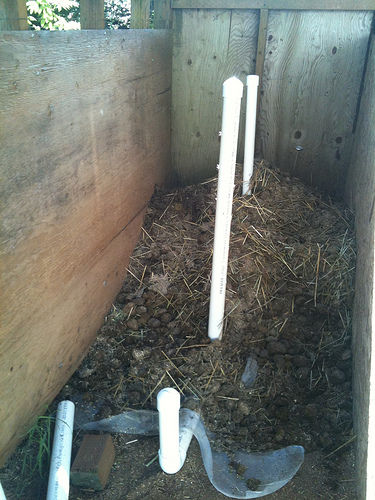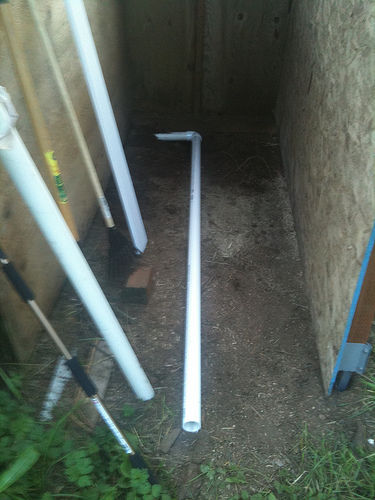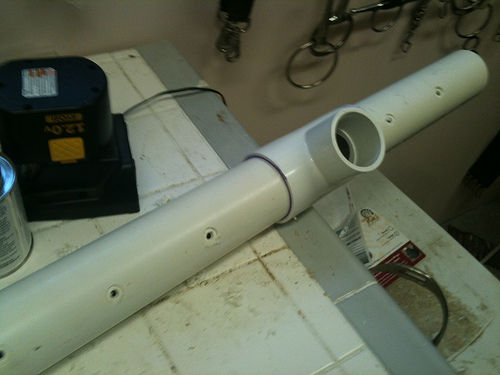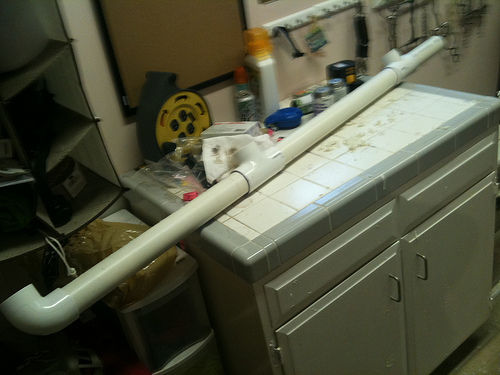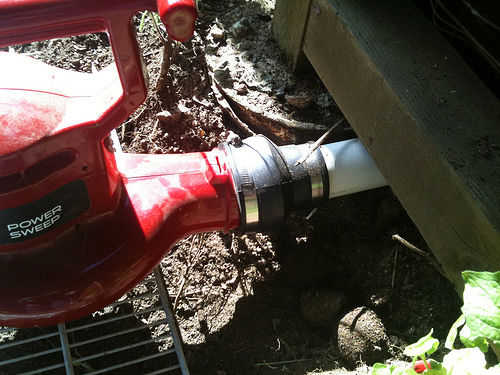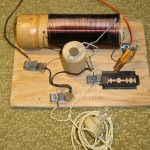How to Make a Simple Forced Air Composting System
Air is often considered the compost pile’s best friend. It provides oxygen to microorganisms that help to break down organic matter into nutrient-rich soil. It also helps to sustain little critters that also aid in the process, particularly worms. Traditionally, air gets introduced into compost piles by turning the material over time with a pitchfork or shovel. However, people have devised a lot of tricks to make the process less labor-intensive over the course of time. Let’s take a look at a simple project that can boost oxygen levels and help your compost pile degrade a lot faster.
Required Material
2 inch diameter PVC pipe
Pipe fittings
Epoxy or cement
Rubber coupling with hose clamps
Electric leaf blower
Outdoor electric cord
Light timer (electric)
Saw
Drill and bits
Shovel
The first step is to prepare your compost bin. You can make it anyway that you like as long as it is bounded by an enclosure or walls. It should also be a minimum of 3x3x3 feet for this project, but larger ones will produce more material over time. Make sure the enclosure is empty while you construct this project.
Preparing the Pipe
You have a lot of flexibility in terms of the scale of this project. The important thing is that the pipe extends vertically throughout the compost pile with a few inches to spare at the top. You will also need a length of pipe that runs horizontally against the ground at the bottom of the compost pile as well. So, it’s important to take measurements and purchase/cut pipe pieces to meet your particular specifications.
You will also need to drill a series of holes through all of the pipe segments in order to allow for maximum air distribution through the system. Space the holes 1-2 inches apart throughout all of the pipe segments, including the bottom one. However, make sure that the holes that you put on the bottom pipe are situated facing upward. Once all of the holes have been fabricated, the next step is to connect the pipes.
Making the Connections
For the bottom pipe, you want to put the elbow joint on one end and position it so that it faces up and cap it off. A good system will also have at least 2-3 vertical pipes that will infuse air into the compost pile, depending on it’s size. The vertical pipes should be spaced evenly throughout the system at about 2 foot intervals. Cut the bottom pipe into sections and join them with T connectors. Make sure the T connectors are facing upward.
When you reach the end of base pipe, attach another elbow joint and add more pipe to make a short side. Then, attach another elbow joint and fit a long section of pipe that will extend to the point where you began to lay the first pipe. You can also drill holes in this section as well. For large compost systems, you can also segment the pipe and attach T fittings and add vertical infusion pipes as well.
I would strongly advise against gluing the segments together until you have had a chance to adjust everything properly.
The next step is to attach the coupling that will connect this pipe to the leaf blower. It will be angled upward in order to accommodate the bulk of the leaf blower, and this is okay. However, if you want to make this fitting differently, feel free to improvise as necessary. Secure the coupling from the pipe to the leaf blower (minus any attachments), and you’re good to go. All you need to do now is attach the vertical pipes, adjust everything and then glue all of the components together. Make sure to cap off the tops of the vertical pipes.
Fill your compost pile and then you can start to operate the system. Connect the timer between the power outlet and cord of the leaf blower. Turn the leaf blower on and allow the timer to power it on or off as necessary. You can skip the timer part altogether if you prefer to turn on and off the leaf blower by hand.
Try this out for yourself, and see how this automatic infusion system can help to break down your compost pile with less effort on your behalf.


